#bivalve
Explore tagged Tumblr posts
Text

Ko-fi dooble - "Clamman, in sense of Mothman"
Clamman, in sense of Mothman"
Please consider supporting me on ko-fi. Leave a prompt with your tip for your own simple monster dooble!
605 notes
·
View notes
Text
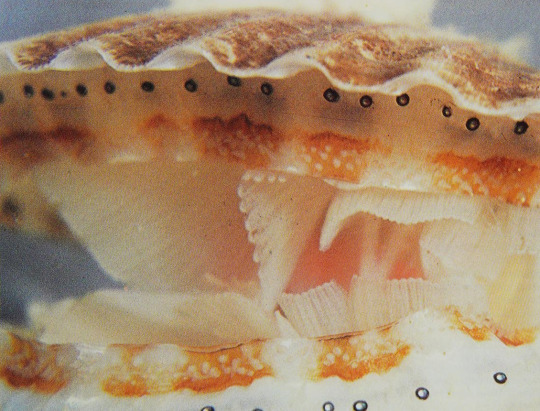
Scallop By: Unknown photographer From: The Grolier Illustrated Encyclopedia of Animals 1994
159 notes
·
View notes
Text
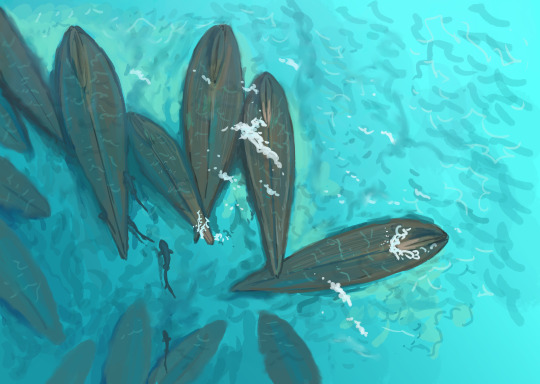
I think many people didn't realize it, but the Permian bivalve I posted yesterday and made look like a ship graveyard was indeed over a meter long. Shikamaia was distributed throughout the global north and potentially employed chemosynthetic bacteria.
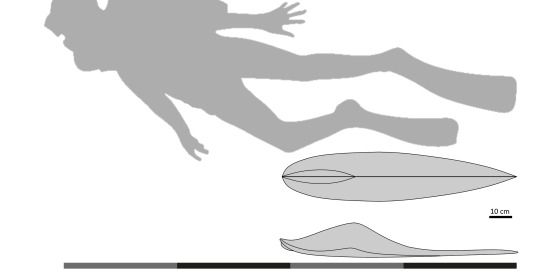
1K notes
·
View notes
Text

Nototrigonia cinctura, fossil trigonid bivalve. Registration nos. P 105465 - P 105469.
108 notes
·
View notes
Text
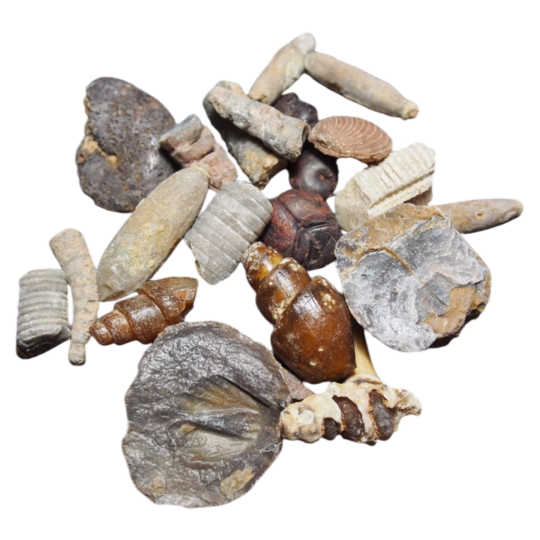
Mix fossils Ammonite Teeth Shark Gastropods lot Bivalve Goniatite Crinoide 11
#gastropods#ammonite#bivalve#goniatite#crinoid#multi#fossil#fossils#png#transparent#paleontology#paleo#paleoblr
139 notes
·
View notes
Text

Alexis Trice (American, 1982) - A Bivalve Song (2025)
132 notes
·
View notes
Text

Trachycardium isocardia
#Trachycardium isocardia#West Indian prickly cockle#wikipedia pictures#wikipedia#wikimedia commons#nature#animals#bivalve#bivalve mollusk#animalia#mollusca#bivalvia#cardiida#cardiidae#ocean animals#marine animals#mollusk#molluscs#cockles#marine biology#marine biodiversity#ocean aesthetic#oceancore#marine aesthetic#sea animals#sea creatures#ocean creatures#marine creatures#seashells
103 notes
·
View notes
Text
Happy Holidays 2023 from ASO!

Happy Holidays from the ASO Team! This year we're all collectively sharing the seasonal cheer, just like Sonic and pals are! See if you can tell who drew who! And what's that Sonic is holding? Open on Dec. 31st, huh? Guess you'll all need wait just a bit longer for the surprise.
Art by @drawloverlala, @pichi-08, @sofibeth-arts, @lankstir21, @salsacoyote, @corythec, @nebuleeart, @little30flames, @kitareartist, @arantarisu-yamu, @darknoisestudio, Tempo, AluSniper, The Magyar, JonnyUnique, Dict.Cola, Sea-Salt, Gaia Ruggenini, Tom Carter “IndexSonic”, _GR33N_RAT_, Nekasa, JaSketch, Pesky-Pincushion, and AidenEye!
#archie sonic online#archie sonic#sonic the hedgehog#merry christmas#happy holidays#aso#sally acorn#knuckles the echidna#amy rose#shadow the hedgehog#miles tails prower#rotor the walrus#nicole the holo lynx#antoine d'coolette#bunnie rabbot#cream the rabbit#cheese the chao#big the cat#froggy#bivalve#julie su the echidna#espio the chameleon#charmy bee#mighty the armadillo#ray the flying squirrel#uncle chuck#blaze the cat#marine the raccoon#rouge the bat#silver the hedgehog
553 notes
·
View notes
Text
Wet Beast Wednesday: eastern oyster
Welcome to another Wet Beast Wednesday presented by me, Bethany, professional bivalve enjoyer. I went into researching this post intending to cover oysters in general, but I quickly found that 'oyster' is actually a really broad and poorly-defined term referring to lots of not very closely related bivalves. I then narrowed it down to the true oysters of family Ostreidae, only to find that there's not a lot in info about a lot of those either. Finally, I just picked the one true oyster I could find the most info about. Maybe I'll do pearl oysters (which aren't true oysters) another day.

(image: an eastern oyster removed from the substrate and placed on a white surface next to a ruler. It is an irregular, lumpy bivalve, with one of its two shells visible. It is an off-white color with many stains and bits of algae growing on it. The ruler indicates it is just under 10 cm long. End ID)
Crassostrea virginica is also called the American oyster, Atlantic oyster, and a bunch of other local and culinary names. They are bivalves, a large category of molluscs characterized by having two shells called valves made of calcium carbonate and connected by a hinge, with the body secured within the shells. Oysters often have lumpy and asymmetrical shells, as opposed to the more symmetrical shells of clams, mussels, and scallops. This is largely due to them living in tightly-packed areas. and needing to grow to fit their homes. Eastern oyster shells can grow up to 20.5 cm (8 in) long. The shells of oysters are connected to each other with a powerful adductor muscle that is used to clamp the shells shut when needed. Also inside the shell are the gills, heart, mantle, gonads, and digestive tract. The mantle is a mollusc structure that can serve a number of functions in different species. In bivalves, the mantle is responsible for secreting the shell as it grows. it can also perform gas exchange due to being filled with lots of small blood vessels, but the gills are mostly responsible for that. Oysters do not have a central nervous system, instead having a simple nerve net that runs through the body. They produce pearls in response to irritants and infections, but these pearls are tiny and have no monetary value.

(Image: a drawing of the internal anatomy of an oyster, with different body parts labeled. End Id. Source)
The eastern oyster lives in intertidal zones along the eastern coast of North America, from northern Canada to the Gulf of Mexico. As with all bivalves, they are filter feeders who use their shells to feed. By opening the shell slightly, water is drawn in. The the ouster closes the shell to force water back out. Oysters use a filter called the latero-frontal cilli to filter the water as it passes out, with the cilia grabbing on to food particles and passing them to the mouth, which is at the back of the shell. Oysters prefer to feed on algae. Feces and particles too big or inedible to eat are stored near the back of the shell. Occasionally, the oyster will use forceful shell closings to shoot the waste out. Oysters are incredibly efficient at filtering the water. A single oyster can filter up to 190 liters (50 gallons) of water a day, removing plankton, algae, food particles, and sediment. This helps keep the water clean, benefiting the ecosystem. Oysters help prevent algal blooms by removing algae and excess nutrients from the water. Algal blooms are caused when excess nutrients leads to a population explosion of planktonic algae. These blooms are dangerous for a number of reasons, but the biggest problem comes from when they die. Decaying agale removes oxygen from the water and when a whole bloom worth of algae dies at the same time, it can leave the water so deprived of oxygen that aquatic animals can drown. Preventing algal blooms is an extremely important benefit to the ecosystem provided by oysters and one of the reasons they are considered a keystone species. Because they live in intertidal zones, oysters may become exposed during low tide. By clamping their shells shut, they can retain enough water to stay oxygenated until the tide comes back.

(Image: a gloved hand holding a cluster of oysters growing on each other's shells. There are barnacles, algae, and bits of kelp growing on them as well. End ID)
The other reason oysters are considered a keystone species is their reefs. Oysters need hard surfaces to adhere to and they tend to cluster in these places. In addition, oysters will often grow on the shells of other oysters, creating growing structures called oyster reefs. These reefs provide a valuable habitat for other intertidal organisms. Oyster shells act as habitat for barnacles, mussels, bryozoans, algae, and other sessile organisms, as well as hiding places for small animals. These in turn attract grazers and predators. The oysters themselves also have a number of predators, including starfish, seabirds, fish, and a variety of parasites. Oyster reefs are often located near estuarine areas or river outflows, taking advantage of the nutrients brought in from land. Oysters are able to survive a wide range of temperatures, salinity, and poorly oxygenated waters.

(Image: a side view of an oyster reef. It looks like hundreds of oysters growing in a wide area, clustered closely together. Smaller oysters are growing on the shell so larger ones. They are exposed to the air, presumably due to low tide. End ID)
Easter Oysters reproduce yearly in summer, with the water temperature being the determining factor. Oysters living farther north spawn later in the summer, when water temperature reaches between 60 and 68 F (15 and 20 C) while those living further south spawn earlier when the water temperature exceeds 68 F. Spawning can happen multiple times a year, as long as the water stays warm enough. Eastern oysters are broadcast spawners that release their sperm and eggs into the water column in synchronized spawnings. Fertilized eggs hatch after about 6 hours into a simple larva called a trochophore that swims using cilia. After a few hours, the trochophore will develop into a veliger larva. These are swimming planktonic larvae that has the beginning of its shells and hunt for plankton and algae. After a few weeks, the veliger will sink to the seafloor and develop into a pediveliger larva, which has a snail-like foot that it uses to move around and find a hard surface. Pediveligers seem to prefer seeking out adult oyster shells, but they will take just about anything. Upon finding a good spot, the larva will produce a cement that it uses to attach its left shell to the surface. This will be where it stays for the rest of its life. The cemented larva quickly develops into a juvenile oyster called a spat. It will be sexually mature by the next mating season. A mature female can produce up to 150 million eggs a year, but only a very few of them will produce a larva that survives to adulthood. All eastern oysters start as males and many will shift to being female after a few years. Changing sex during one's life is called sequential hermaphroditism. Most species can only change sex once, but eastern oysters can change sex multiple times.

(Image: a drawing of the life cycle of an oyster. It shows an adult oyster releasing sperm and eggs, which are fertilized and lead to a veliger, which looks like a mini-oyster with a fan-like swimming structure. The veliger develops to a pediveliger, which has a snail-like foot sticking out. That then progresses to a spat attached to the shell of a larger oyster, which develops to an adult. End ID. Source)
Eastern oysters are classified as vulnerable to extinction. Their primary threats are overharvesting and climate change. Eastern oysters are edible and form a major fishery in both the United States and Canada. Harvesting of oysters peaked after the industrial revolution, almost driving the species extinct. Even now, when harvesting is more highly regulated and has a much lower output, the wild population is estimated to be 1% of its pre-industrial status. Aquaculture of eastern oysters is growing and, in recent years, more of the food output has been from captive-raised oysters than wild ones. Oysters are also threatened by pollution and climate change. While they can tolerate a wide range of temperatures, they are vulnerable to heat stress, especially as they can't move to cooler waters in summer. Climate change also results in ocean acidification, which results in less structurally sound shells. Pollution threatens oysters and their larvae and a recently-introduced disease called multinucleated sphere x has the potential to wipe out whole reefs. Because oysters are a keystone species, their loss can threaten whole ecosystems.

(Image: an oyster farm. It consists of rows of cages tied together and left resting on the seafloor. The cages are full of developing oysters. Raising them in the wild allows them to clean the water and get food for free and does not mean destroying the reefs when they are harvested. End ID)
#wet beast wednesday#oyster#eastern oyster#oysters#american oyster#atlantic oyster#bivalve#mollusk#molluscs#invertebrates#invertiblr#shellfish#atlantic ocean#marine life#marine biology#biology#ecology#zoology#animal facts#informative#educational#aquatic#image described
54 notes
·
View notes
Text
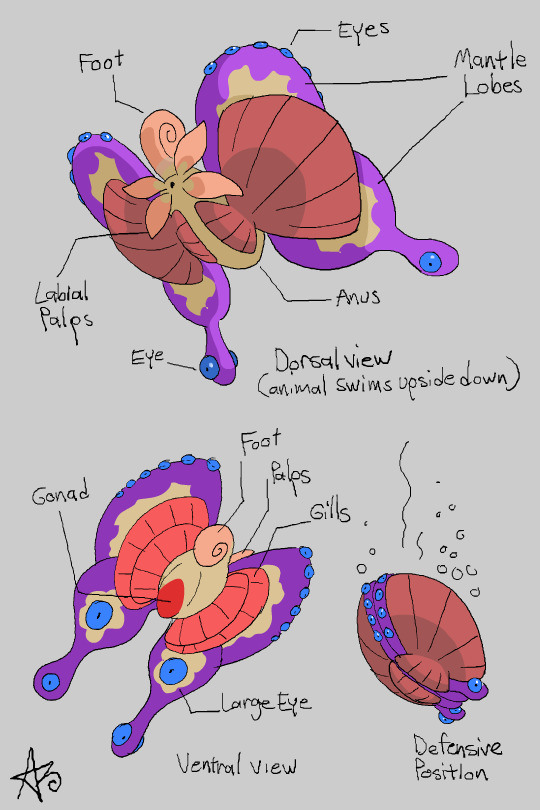
Ko-fi Dooble – “A fusion between a clam and a butterfly“
Skyllop (it’s still completely aquatic)
673 notes
·
View notes
Text
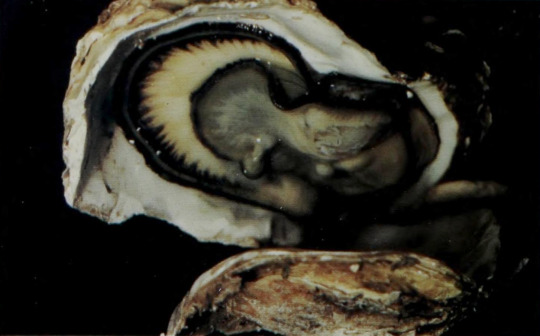
Portuguese oyster (Gryphea sp.) By: R. H. Noailles From: The Science of Zoology 1966
121 notes
·
View notes
Text
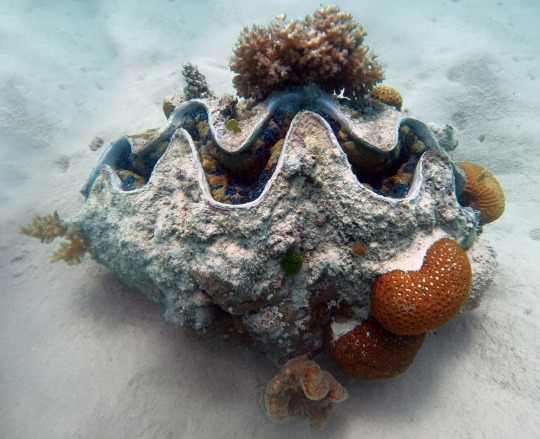
By Charles J. Sharp - Own work, from Sharp Photography, CC BY-SA 4.0
159 notes
·
View notes
Text
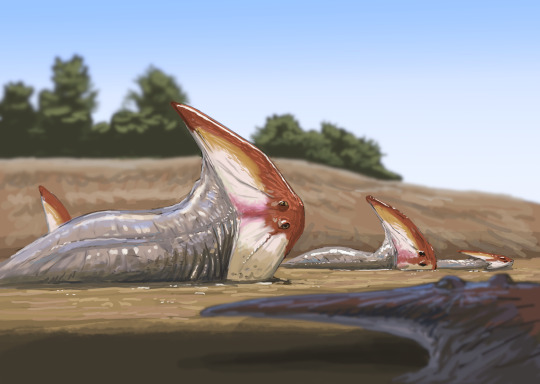
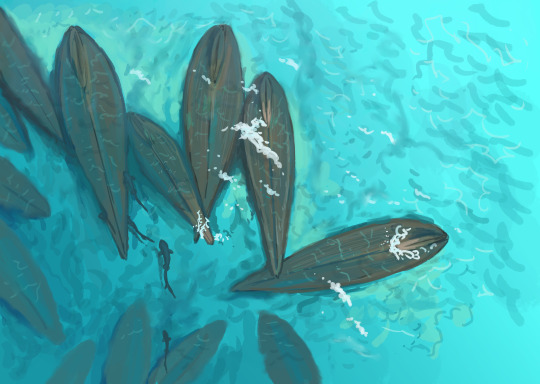
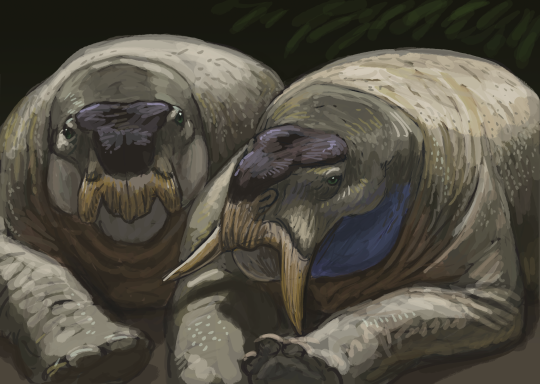
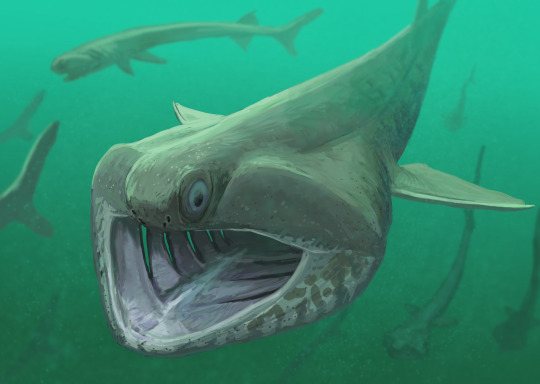
Results from the #paleostream
Diplocaulus minimus, Shikamaia (giant Permian bivalve), Placerias (male and female) and Acanthodes
#paleoart#sciart#paleostream#palaeoblr#dinosaur#triassic#fish#dicynodont#placerias#bivalve#diplocaulus
653 notes
·
View notes
Text
By studying calcifying organisms, Leanne aims to better understand the impacts of human activity on marine ecosystems. Through her research, she hopes to influence policy that helps protect marine calcifiers in the future.
“Why is this important? The idea is that the more porous the shell, the weaker it is. Mussels need strong, robust shells to protect their inner soft organs—and that strong 3D structure is important for ecosystem function as habitat formers and storm defenses.
Currently, the changes seen in shell porosity are not large enough to influence the material properties, so we aren’t seeing weaker shells just yet. But with further warming in our oceans being predicted, this could potentially lead to even more porous shells, potentially impacting mussels’ function as habitat formers and storm defenses, as well as their ability to protect themselves from predation,” Melbourne explains.
Learn more about her research here.
#science#museum#amnh#natural history#nature#marine biology#marine ecosystem#mussels#bivalve#did you know#fact of the day#research#women in stem#climate change#conservation#earth month#earth day
380 notes
·
View notes
Text
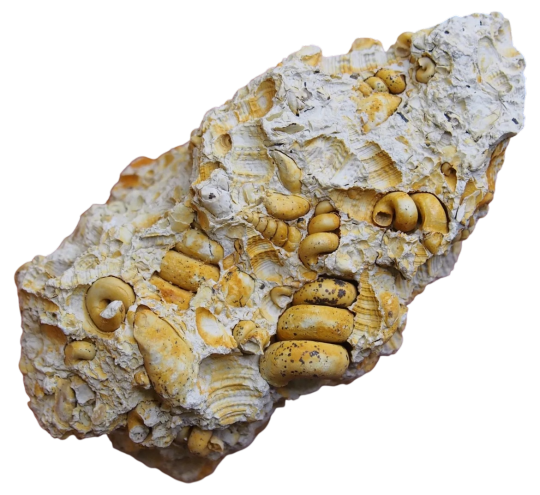
92gr Gastropod Granulolabium Turritella Bivalve Fossils
#gastropod#gastropods#granulolabium#turritella#bivalve#fossil shell#png#transparent#paleontology#fossil#fossils#paleoblr
32 notes
·
View notes
Text
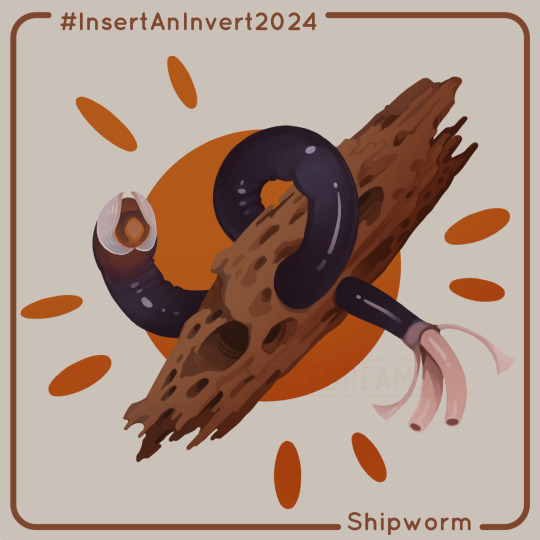
🪱 #InsertAnInvert2024
Worms: Long and Limbless
Shipworm
Despite the appearance, shipworms are actually a mollusc! These bivalves have evolved to use their shells not for protection, but for boring through driftwood.
------
Interested in learning more about the invertebrate animals around us? Join into the year-long InsertAnInvert event organized by Franzanth, where every week a new animal is spotlighted! Draw unique animals, read up on cool facts, or just follow the tag online to see a lot of cool artwork.
Prompt List: https://bsky.app/profile/franzanth.bsky.social/post/3khyob3xn742q
------
Like my work? Visit my shop, or support me on Ko-Fi!~
#cuttledreams#insertaninvert2024#shipworm#bivalve#molluscs#I love shipworms#have wanted to paint some for almost a year and am so happy it was on the prompt list
240 notes
·
View notes